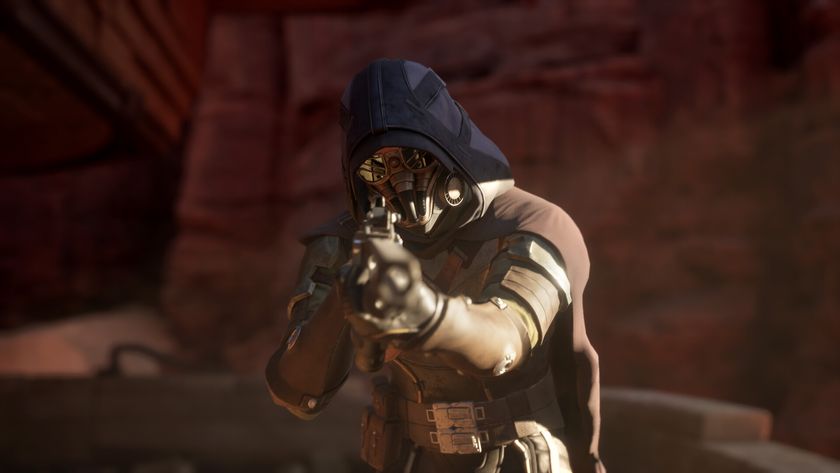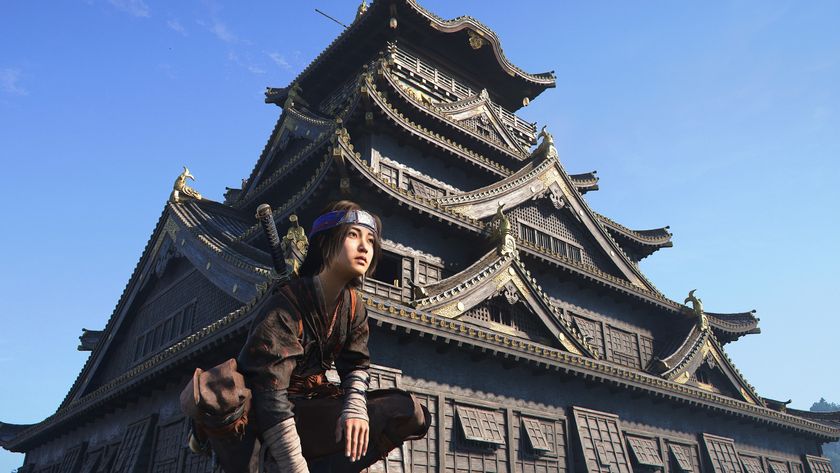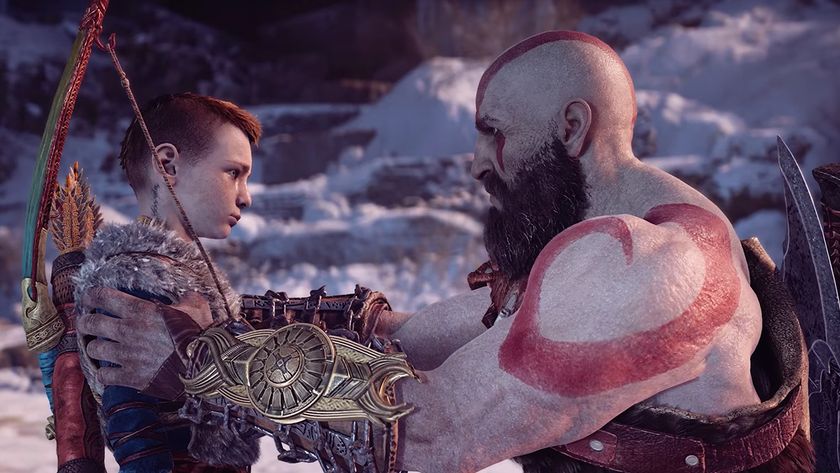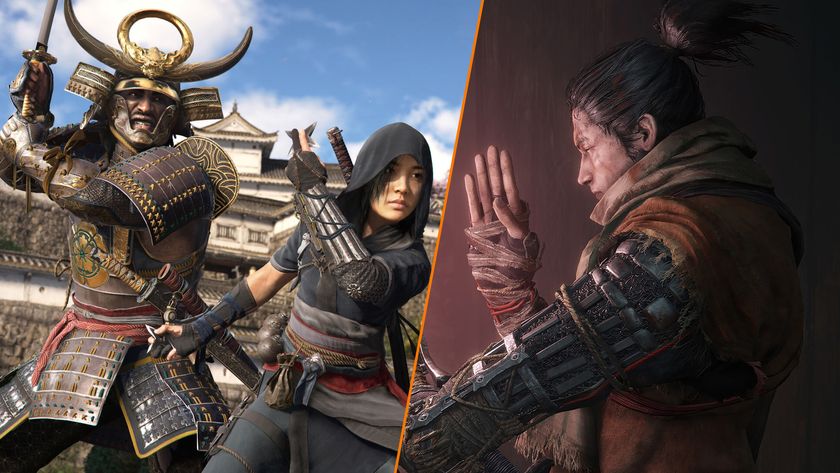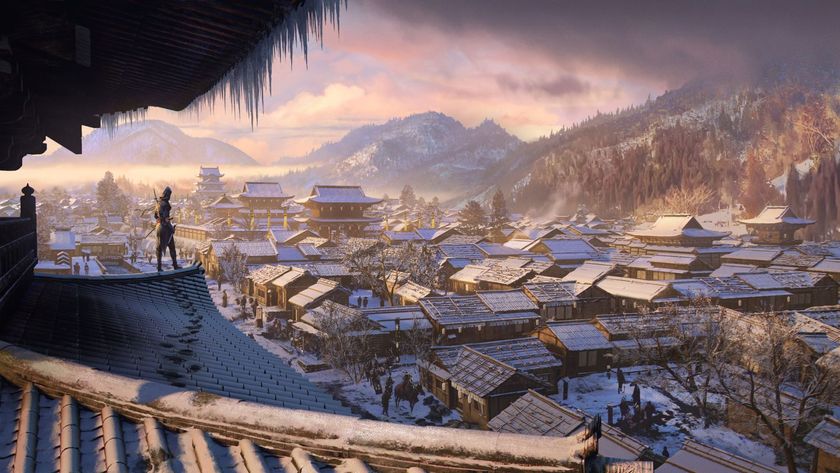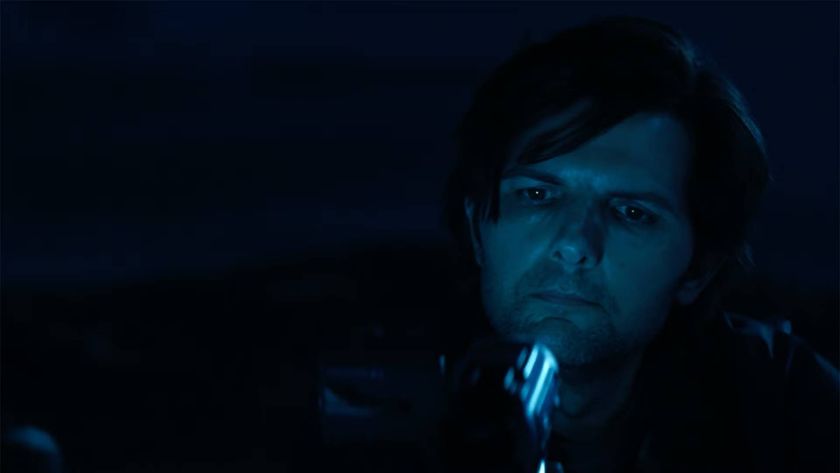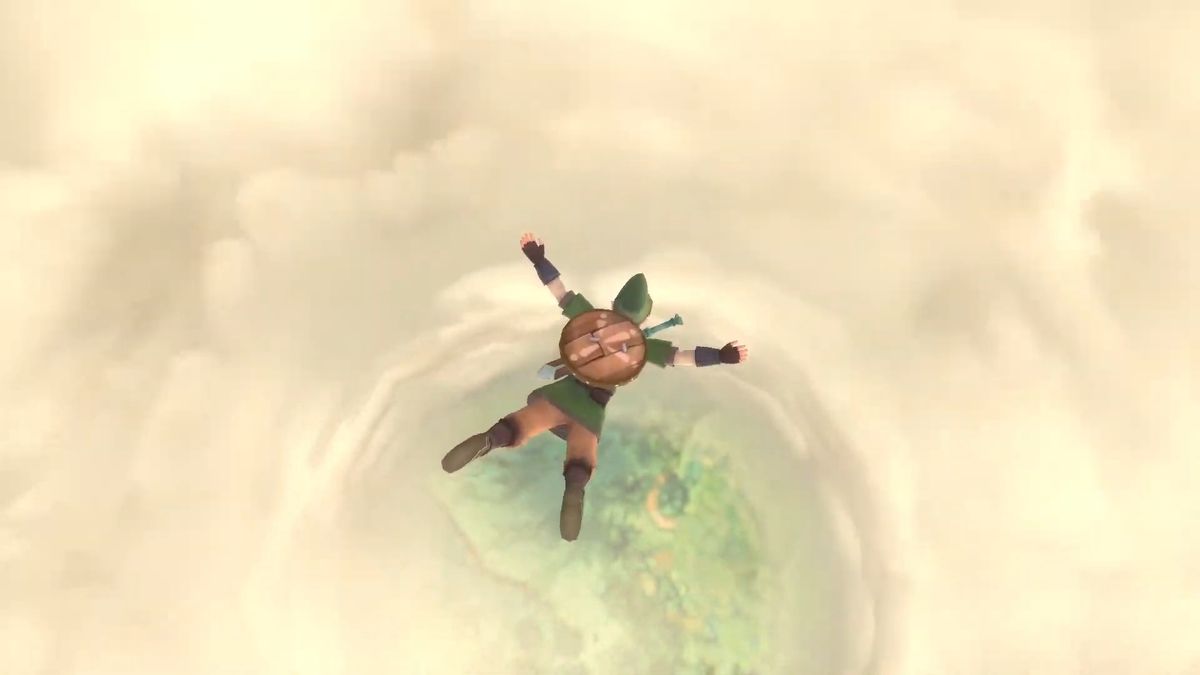
When Zelda games are pitched as legends retold in new eras, you have to sometimes take with a pinch of salt where in the timeline they are. Nonetheless, Skyward Sword is regarded as the beginning of the Zelda canon, set after the world's creation and the Era Of Hylia, a time before there was even a Hyrule. Indeed, the setting here is up in the skies where the Goddess Hylia sent survivors to escape the destruction wrought on the lands below by the Demon King Demise, with descendants countless generations later living their lives amongst scattered floating islands – the largest being Skyloft – believing the surface below as nothing more than a myth. That is until one day, Link, a new knight-in-training, embarks on a quest to rescue his childhood friend Zelda (not yet a princess but the daughter of the Skyloft Academy's headmaster) who's taken by a dark tornado and whisked below the clouds.
This new chapter called for a new look and one that would best serve the then-ageing Wii console, itself already technologically behind its competitors who had taken the leap to HD. Neither sticking to the more realistic look of Twilight Princess nor reverting to the divisive cartoonish cel-shading of Wind Waker (even though in retrospect the latter is now considered timeless and beloved), Skyward Sword's art style is somewhere in the middle, with a soft and vivid painterly palette that takes inspiration from impressionist painters like Monet and Cezanne – Shigeru Miyamoto himself being a huge fan of impressionist art. The reasoning behind this aesthetic was also to better exaggerate the characteristics of its characters, though you can also imagine that an art style where there's not as much focus or detail works strongly in favour of the Wii's standard definition.
New beginnings
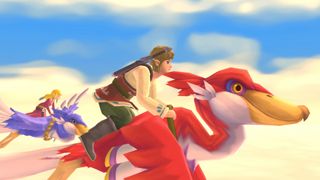
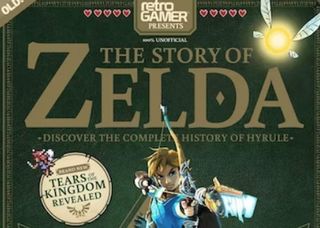
A new beginning also made for the right time to pass the torch in the development team. Having been responsible for spearheading the series into its 3D era since Ocarina Of Time, Eiji Aonuma stepped down from the director role, though would continue to have a major involvement in the series as producer. Taking over as director was Hidemaro Fujibayashi, already an experienced developer with the Zelda series, although so far it had only been on a smaller scale, having directed Game Boy Color titles Oracle Of Seasons and Oracle Of Ages when he was employed at Flagship/Capcom; in fact, as development for Skyward Sword had begun in 2006, he was still finishing development for 2007's Phantom Hourglass for the DS. So having overseen Zelda titles that included unique gameplay features such as a diptych that interconnects and novel interactions with the Nintendo DS's touchscreen and microphone, what would be the key innovation for Skyward Sword in his home console directorial debut for the series?
The answer was to create a Zelda game that could only be experienced on the Wii, which would be a genuine tour de force showcase for the console's motion controls. It was certainly something the console needed towards the end of its life when the game was released in 2011. By that point, the novelty of motion controls had worn off, as the console was inundated with shovelware and short-lived gimmicks that helped coin the derisive term 'Wii waggle'. Other first-party releases like MonolithSoft's expansive RPG Xenoblade Chronicles, meanwhile, simply reverted to traditional control schemes that were arguably best played with the Classic Controller.
Because for all the thrill there was with swinging the Wii remote to mimic Link's sword in Twilight Princess, that was ultimately a GameCube title, with the Wii release bolting on motion controls as an afterthought, where your swings didn't really make a difference to how the weapon moved. It only made sense that Nintendo would want its star franchise to properly embrace the core technology of its best-selling console, because it surely couldn't leave it with just Link's Crossbow Training. Coming in the latter part of the Wii's lifetime was instead to Skyward Sword's benefit, as it was able to learn from other Wii titles that had come before, with ideas taken from other motion-control games and then implementing them into one cohesive package that made those mechanics feel fresh again. More importantly, it would also be able to take advantage of the new MotionPlus accessory released in 2009, which allowed for more complex and accurate motions to be interpreted than the original remote could. In other words, your swinging of the remote in your hand does have 1:1 motion with Link's sword in the game, while the secondary Nunchuk controller is held up to block with the shield, the two parts making you feel more like a hero in your living room than ever before.
It's then a surprise to learn that the team faced many difficulties implementing MotionPlus technology into Skyward Sword and almost abandoned it altogether. Fortunately, the release of Wii Sports Resort, which includes sword fighting as one of its minigames, proved to be the inspiration they needed. There's still a concession to how swordplay works, as despite the appearance of 1:1 movement, you're still ultimately judged on eight possible directions to cut through an obstacle or enemy, as well as a forward direction by thrusting the sword. There's also a special move, the titular Skyward Strike, where by holding your sword in the air, you can charge it with the Goddess Hylia's divine power and unleash it on your enemy. In some cases, this move is essential for breaking through certain enemy defences and solving brain-teasers.
Similarly, combat itself turns into a bit of a puzzle as you parse which direction you should be slashing your sword to get past an enemy's shield instead of just mindlessly waggling and hoping for the best. This is also where the art style works effectively since the exaggerated design of characters means that from their body language you can quickly parse, for instance, which side they're holding their shield or where their weak spot is exposed so you know where to aim for instead of just an obvious glowing red spot. Indeed, it's not just the swordplay but other minigames that also helped inspire a whole range of Skyward Sword's other gameplay mechanics. Archery is another obvious example that easily translates to Link's bow skills where instead of just pointing at the screen, you're actually using the remote as the bow you hold up while you pull the Nunchuk back like the string. But then there's the way you can pick up bombs and roll them along the ground like bowling balls, and you can even angle your wrist if you want to curve them, while Wii Sports Resorts' Island Flyover mode surely also inspired the way you control the new flying mechanical beetle. Familiar mechanics used in sports games and other more casual pursuits are suddenly what makes you feel heroic while exploring some of the best dungeons in the whole series.
Sign up to the 12DOVE Newsletter
Weekly digests, tales from the communities you love, and more
Mapped out
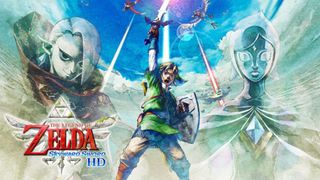
"But of all the evolutions Skyward Sword takes, one of its strongest elements lies with its storytelling."
The world map has a lot in common with Wind Waker, if you replace sailing in the seas with random enemy outposts and islands with flying in the sky astride beasts called Loftwings. Although some of the smaller floating islands can be explored as you approach them where they might hide treasure or a minigame challenge, this isn't strictly open world since it merely places select locations that you can drop Link into before loading into another area. Yet that doesn't diminish just how expansive some of the environments below the clouds are. While the goal is usually to find the dungeon in that area, these surface overworlds are so much more involved, allowing you to make use of the many creative mechanics you have at your disposal, that they almost feel like dungeons in their own right, where you also have puzzles and challenges to overcome before you can get further in.
Using the many tools you unlock, from familiar staples like the bow and Hookshot to the rarer whip and gust bellows, already has a greater sense of immersion with motion controls. That you also have the opportunity to use them outside of dungeon puzzles also makes them feel less like glorified key cards introduced and discarded after a single dungeon, which some past instalments have been guilty of. That doesn't make these over-worlds perfect. One criticism is how you're made to revisit them in the second half of the adventure, even though they have been transformed either in terms of terrain – such as how half of Faron Woods is suddenly underwater – while new circumstances mean your second visit to Eldin Volcano turns into a stealth section where you have to recover your lost items. More annoying still is when you have to enter the Silent Realm versions of these areas, tasked with collecting all the Sacred Tears without being discovered by some very stressful sentries that you can only run away from.
But of all the evolutions Skyward Sword takes, one of its strongest elements lies with its storytelling. Sure, you still may not get to play as Zelda in her own game, but she also has something close to resembling an arc this time around. As Link discovers each clue of her whereabouts throughout the game, you get a sense of her personal journey awakening to her destiny that we see continue in future generations of the series. In parallel to that, there is the demon lord Ghirahim who is also after Zelda and wants to use her in his plans to resurrect Demise, whose evil is hinted at being a prelude to the series' recurring big bad Ganon.
Perhaps the most memorable part of the story goes to Groose, a seemingly minor character who seems to be nothing more than a bully to Link, going as far as getting his goons to trap Link's Loftwing to stop him from passing his academy exam at the beginning of the game. Yet despite the satisfaction of seeing a vain jock eating humble pie when he realises he's not the hero in this story, it's to the writers' credit that he ends up with one of the best redemption arcs in the entire series, with still a significant role to play in the story, even getting to be one of few characters to get screen time in the ending sequence. On the other hand, Fi, a spirit who resides within Link's Goddess Sword, is more divisive in the thankless role as Link's guide. She has a habit of coming out of the sword to give far too many hints, instructions, or reminders, at the expense of many players' patience. This wasn't limited to just Fi, since there was also a bizarre quirk where the game would repeat the same animation of Link picking up an item or material for the first time whenever you start a new play session, but it made her an easy target for frustrated players. Yet whether or not you found her annoying, it's also hard not to feel swells of emotion when the time finally comes for her to part ways with Link.
No doubt that the extra emotion felt in Skyward Sword was also down to it being the first game in the series to have a full orchestral soundtrack, further celebrated with an audio CD soundtrack being bundled with copies of the game. That isn't to say that the MIDI tracks in past games aren't still classics in their own right, but the themes, including the game's main theme 'Ballad Of The Goddess', truly soar to new heights thanks to live orchestration led by Hajime Wakai and supervised by Nintendo's legendary composer Koji Kondo. The work saw the game's sound team doubling from its original five-person group, the largest sound team working on a Nintendo game at the time. It's only ironic then that the in-game musical component, a harp, is disappointingly basic, where you simply wave the remote left and right at various tempos.
Big birthday
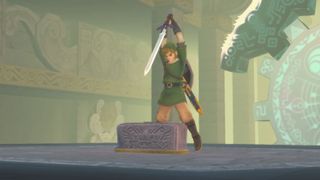
"While some criticisms are valid, it doesn't diminish how Skyward Sword's story and dungeon designs remain the very best in the series".
Officially revealed at E3 2009 and planned for a 2010 release, the game was ultimately delayed until 2011, making Skyward Sword's five-year development the longest Zelda game in production at the time, although that meant it would arrive for the series' 25th anniversary, and for that milestone it didn't disappoint. With such immaculate polish and innovation, it showed the best of what the Wii could still be, not only receiving 10/10 from Edge, but also earning the publication's coveted Game Of The Year award, beating the likes of Skyrim and Dark Souls. Ironically, it's the latter two that have been remembered more fondly over the years, while it didn't take long for Skyward Sword to be rather unfairly relegated to the back burner.
For many hardcore players, a Zelda title dedicated to motion controls, no matter how well executed, was already a deal breaker so late into the Wii's lifetime when people were ready to put it behind them. Despite the open explorable skies and fairly spacious surface overworlds, many also felt it was far too linear, exacerbated by the somewhat overbearing tutorialization, most keenly felt in the game's opening hours. For others, despite how motion controls arguably made familiar mechanics feel new again, the formula that had been in place since Ocarina Of Time was beginning to wear thin, with fundamentally not enough that felt genuinely new while also being too repetitive in places (the less said about recurring boss The Imprisoned, the better).
While some of these criticisms are valid and would be addressed in its remaster (see the box on the right of this page), it doesn't diminish how Skyward Sword's story and dungeon designs remain the very best in the series – two elements that fans retrospectively cherish, given their reduced appearances in the otherwise game-changing masterpiece Breath Of The Wild, also helmed by Fujibayashi. The two are of course very different games, but we can see ideas from the former being reworked into the latter, from Link's stamina wheel gauge when performing certain actions to his sailcloth, restricted for a few functions like riding certain updrafts or breaking his fall, evolving into a paraglider that has far more traversal possibilities. Even with the huge land mass of Hyrule at your feet, Tears Of The Kingdom looks set to take us back to the skies again too, perhaps to fulfil the potential when we first looked beyond the clouds in Skyloft. The Wii may have revealed that the sky did actually have a limit, but even within those limits, Skyward Sword aimed high and smashed it out of the park.
Keep up to speed with all of our celebratory Zelda coverage with our The Legend of Zelda celebration hub
I'm a freelance games journalist who covers a bit of everything from reviews to features, and also writes gaming news for NME. I'm a regular contributor in print magazines, including Edge, Play, and Retro Gamer. Japanese games are one of my biggest passions and I'll always somehow find time to fit in a 60+ hour JRPG. While I cover games from all platforms, I'm very much a Switch lover, though also at heart a Sega shill. Favourite games include Bloodborne, Persona 5, Resident Evil 4, Ico, and Breath of the Wild.
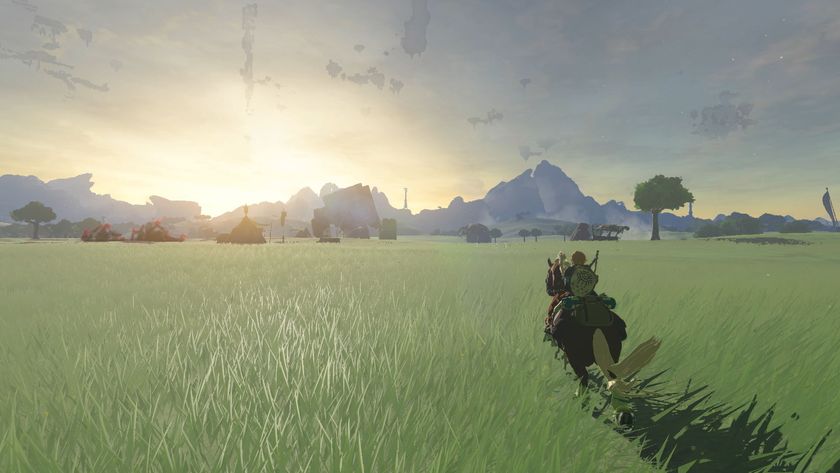
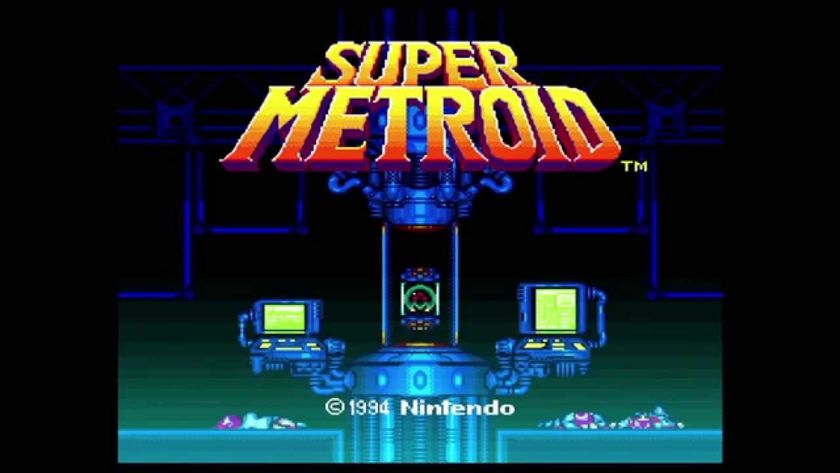
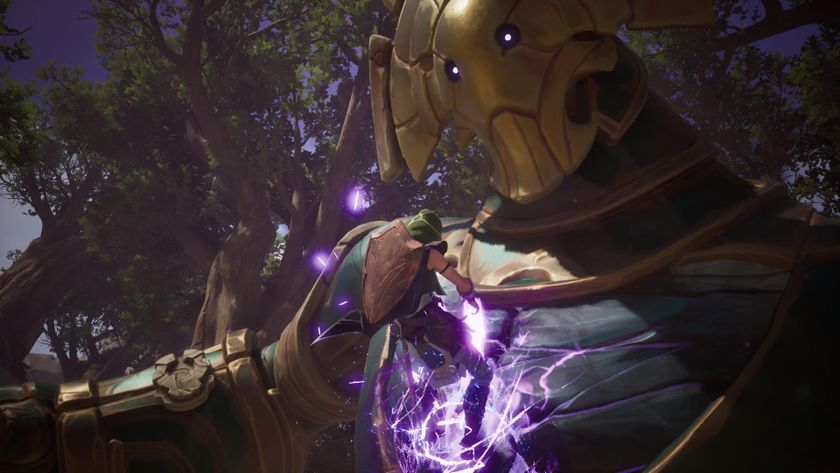
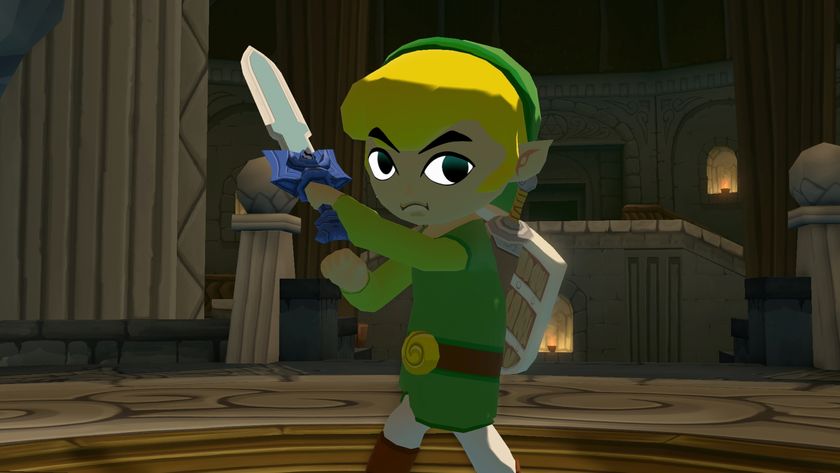
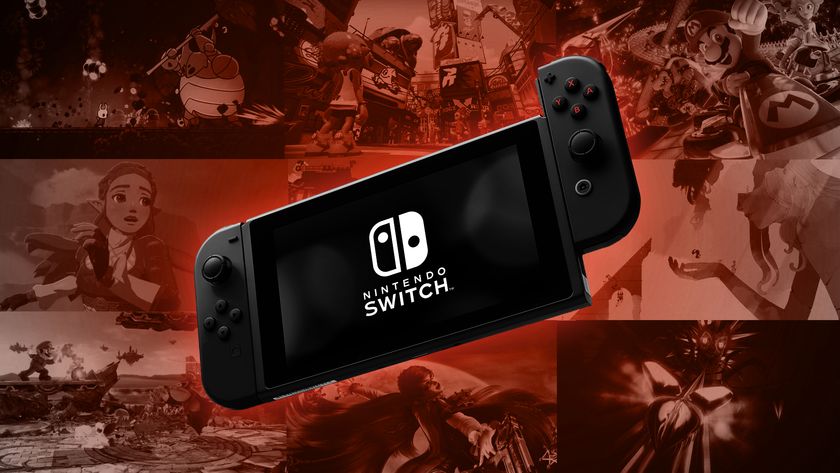
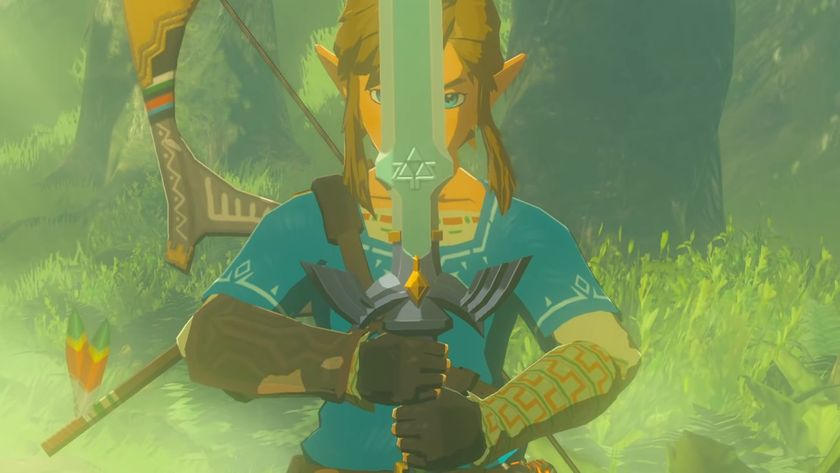
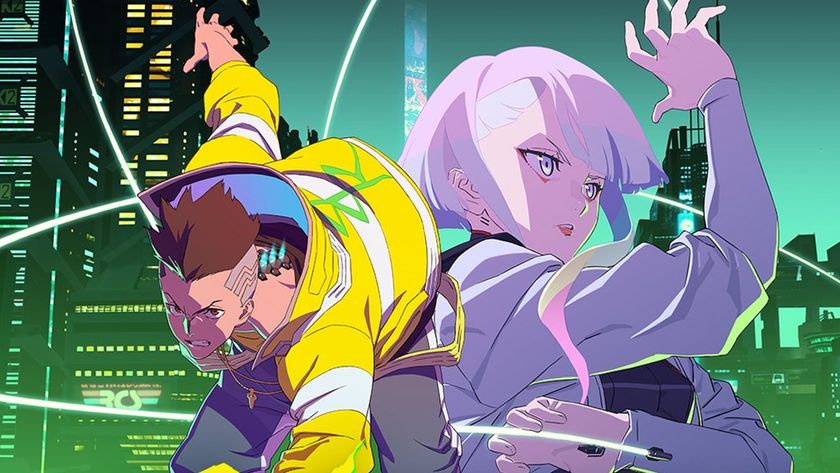
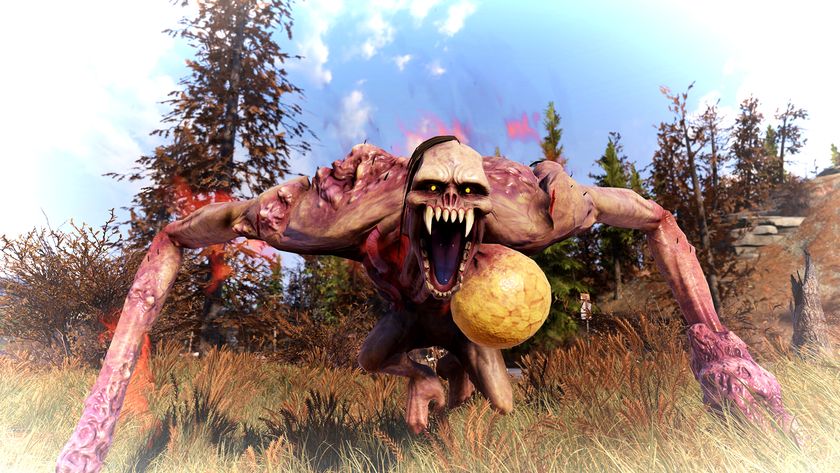
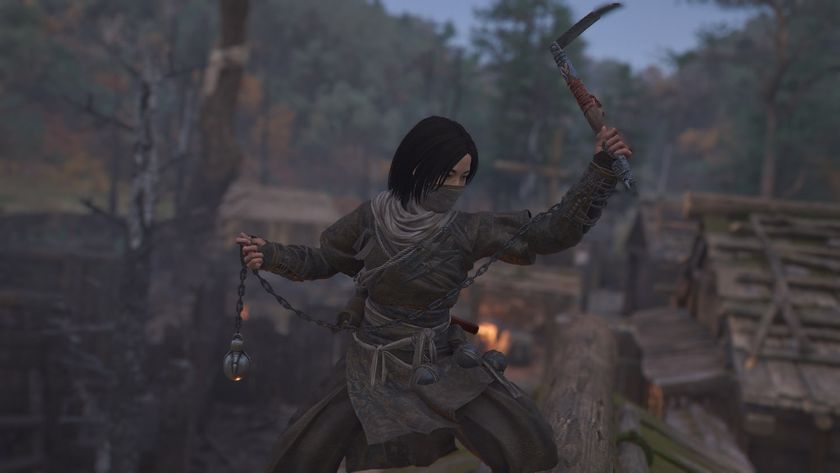
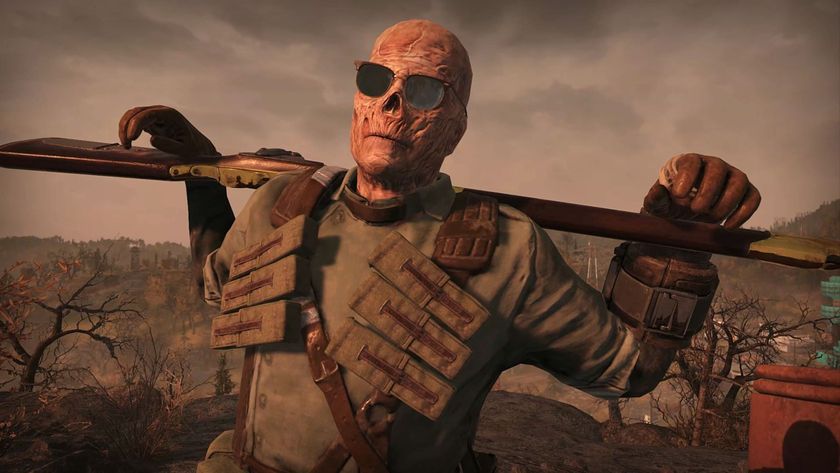
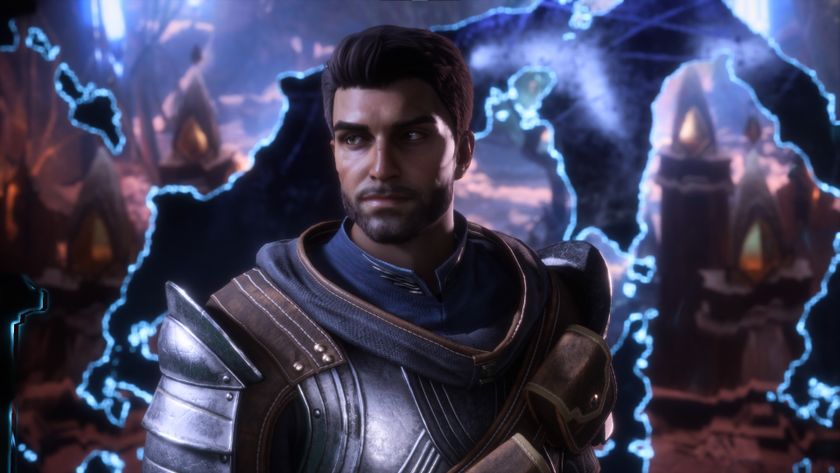
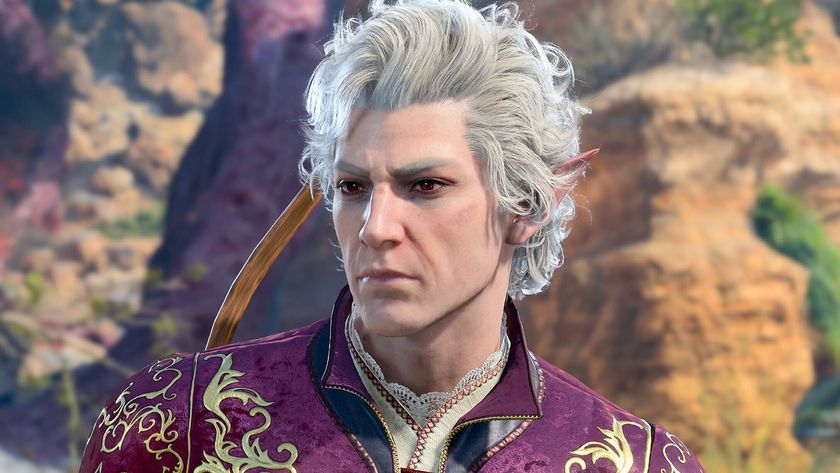

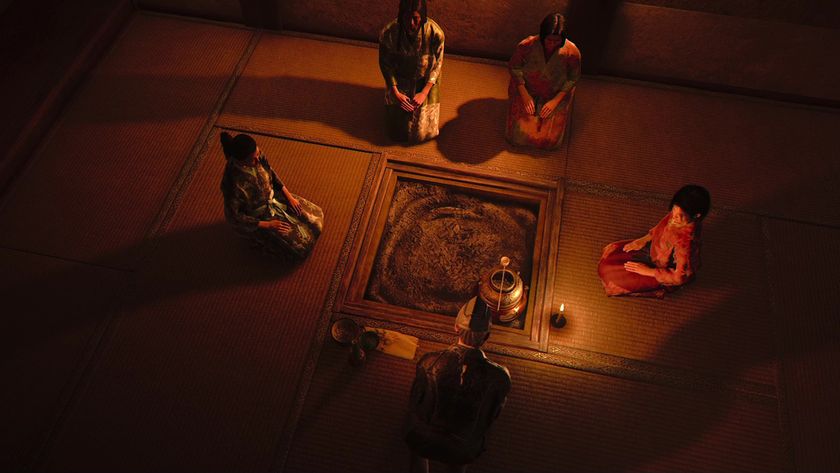
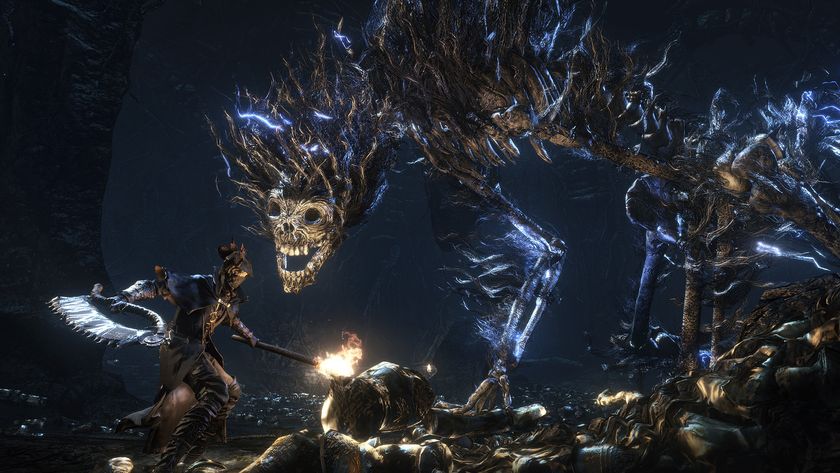
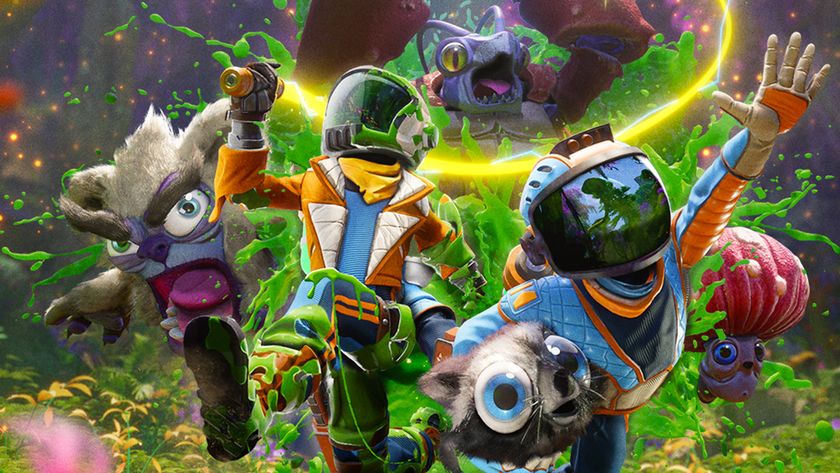
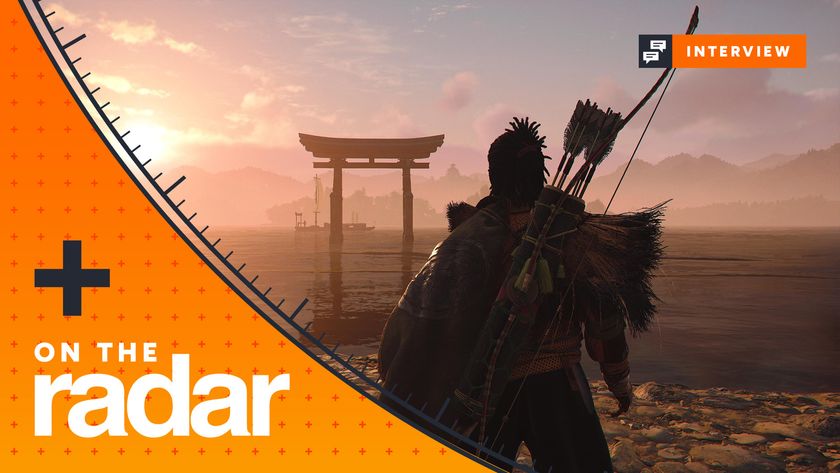
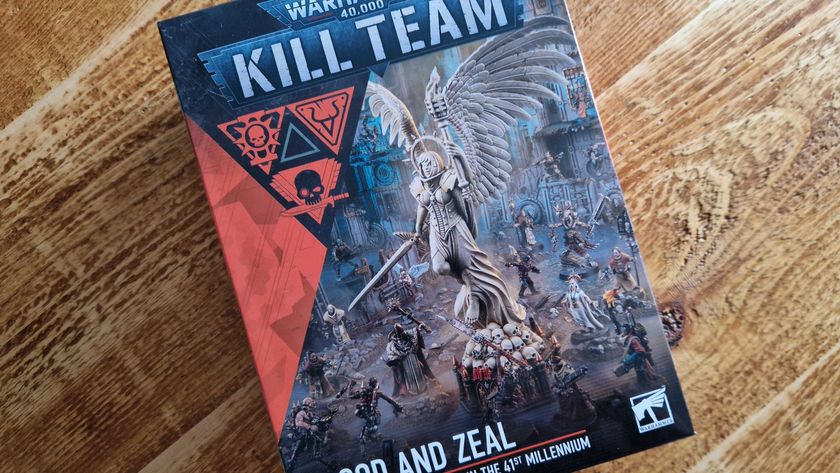

Witcher 3 and Cyberpunk 2077 studio CD Projekt Red won't make survival games just because they're popular, but Netflix's Edgerunners anime is fueling dreams bigger than RPGs

After 14 years at Bethesda, Skyrim and Fallout veteran made his final settlement in just 2 days – but only because he'd made some rough ones before that

